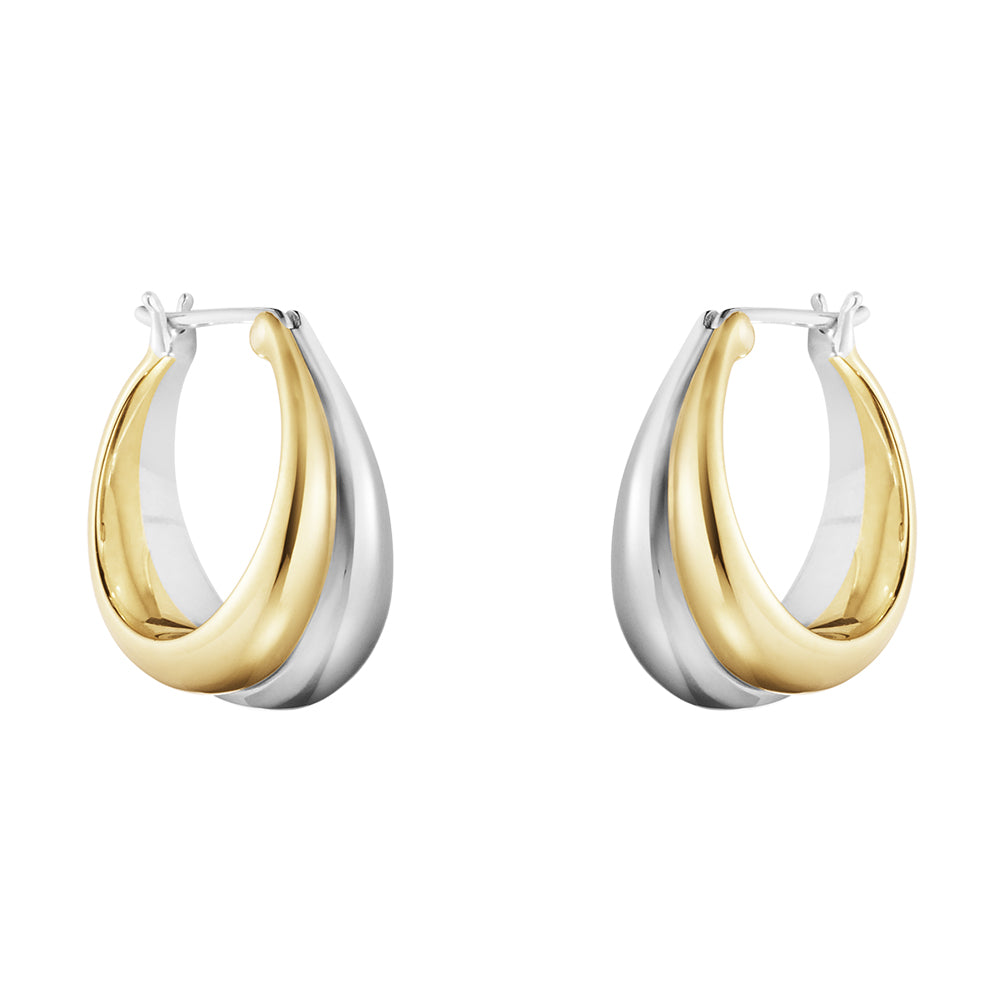
What Gauge Are Earrings? Find Your Perfect Fit
Introduction
Choosing the right earring gauge isn’t just about fashion—it’s essential for comfort, healing, and ear health. From delicate studs to bold hoops, the gauge determines fit and safety. In this guide, we explore everything you need to know about earring gauges with scientific accuracy and practical insights.

What Does “Gauge” Mean and How Is It Measured?
When it comes to earrings, “gauge” refers to the thickness of the earring post or wire that goes through your piercing. Unlike measurements in millimeters or inches, gauge works in reverse—the smaller the gauge number, the thicker the jewelry.
For example:
20G = 0.8 mm (commonly used for standard earlobe piercings)
16G = 1.2 mm (often used for cartilage piercings)
This sizing method is based on the American Wire Gauge (AWG) system, which was originally designed for measuring electrical wires. Over time, the piercing industry adopted it for its precision and consistency.
So how does the AWG system work? It’s simple:
The more times the metal is stretched, the thinner it becomes.
That means a higher gauge number = thinner wire, and a lower gauge number = thicker jewelry.
Common Sizes in Millimeters:
20G ≈ 0.81 mm
18G ≈ 1.02 mm
16G ≈ 1.29 mm
Quick Tip: Want to find out your earring’s exact size? Use a digital caliper for an accurate measurement—this is especially important for people with sensitive ears or new piercings.
Standard Earring Gauges for Different Piercings
Knowing the correct gauge ensures comfort and prevents complications like tearing or rejection. Here are typical gauges used for different piercing types:

Note:"Industrial/Scaffolding" refers to a type of ear piercing, often called industrial ear piercing (Industrial Piercing) or scaffolding piercing.
Why It Matters
Choosing the wrong gauge can cause:
Too thin: Jewelry may migrate, causing uneven piercing channels.
Too thick: Forces tissue to stretch prematurely, leading to scarring.
Official Insight (Association of Professional Piercers, APP):
“Initial piercings should be performed at an appropriate gauge to allow for healthy healing without undue pressure or trauma to the tissue.”

Factors That Determine the Right Gauge for You
Choosing the correct gauge isn’t a one-size-fits-all decision. It depends on:
Piercing Type
Cartilage requires thicker gauges than earlobes for structural stability.
Skin Thickness & Elasticity
Thin lobes can comfortably handle 20G, but thicker tissue may require 18G for durability.
Jewelry Style
Heavier statement earrings often need sturdier posts for support.
Healing Stage
Initial piercings usually start at 18G or 16G for strength during healing, while healed piercings can accommodate thinner gauges for delicate designs.
How Gauge Affects Ear Health
Gauge size impacts more than aesthetics—it’s a medical consideration. Wearing an incorrect gauge can lead to:
Migration & Rejection: Common with gauges too thin for the tissue.
Tearing: Wearing oversized gauges in an unhealed piercing.
Hypertrophic Scarring: Occurs when tissue is overstressed by gauge mismatch.
Expert Insight (Cleveland Clinic):
“The size and material of jewelry play a major role in preventing infections and irritation in piercings.”

Rare but Fascinating Facts About Earring Gauges
Historical Gauging:
Ancient tribes, like the Maasai, practiced earlobe stretching using organic materials. Gauging in modern piercing draws from this cultural heritage.
Thermal Expansion:
Did you know? Metal earrings expand slightly with body heat. Titanium expands less than stainless steel, making it an ideal hypoallergenic material.
Gauge and Blood Flow:
Piercing gauge influences local blood circulation. A too-tight fit can impede healing by compressing capillaries, delaying oxygen delivery to tissue.
Best Materials for Different Gauges
Not all materials are equal. When choosing jewelry for any gauge, prioritize biocompatibility.
Titanium: Lightweight, nickel-free, great for sensitive ears.
14K Gold: Luxurious and hypoallergenic (avoid gold-plated for initial piercings).
Surgical Steel (Implant Grade): Durable, affordable, but may cause reactions in nickel-sensitive users.

How to Measure Your Earrings at Home: Simple Yet Accurate Methods
You don’t need to be a jeweler to figure out your earring gauge. With a few simple tools and some easy steps, you can measure your earrings at home with surprising accuracy:
1. Use a Digital Caliper for Precision (Best Method)
If you want an exact measurement, a digital caliper is your best friend. These are inexpensive and widely available online. Just place the post of your earring between the caliper jaws and note the reading in millimeters.
Pro Tip: Standard gauges for studs usually range between 0.8 mm (20G) and 1.0 mm (18G).
2. Compare with a Gauge Size Chart
If you don’t own a caliper, print a gauge conversion chart or pull one up online.
Simply hold your earring post against the chart until you find the closest match.
Make sure you’re measuring the post (the part that goes through your ear), not the decorative front or the backing.
3. Use Household Tools (DIY Method)
No caliper? No problem. Here are a few hacks:
Use a ruler with millimeter markings. Lay the earring post flat and measure its thickness.
If you have a drill bit set, you can gently test which bit fits snugly against the earring post. Match the size to the drill bit chart for an approximate gauge.
4. Know the Key Conversion
For reference:
20G ≈ 0.8 mm
18G ≈ 1.0 mm
16G ≈ 1.2 mm
Accurate measurement prevents discomfort, tearing, or irritation. If your piercing hole has shrunk, forcing in a thicker gauge can cause pain or even permanent damage. On the flip side, wearing a post that’s too thin can cause migration or uneven healing.

Scene-Based Advice: When Fashion Meets Function
Imagine this: You’re preparing for an elegant evening. You’ve chosen stunning chandelier earrings—but their posts are thicker than your usual studs. If your piercing is standard 20G, forcing in a 16G post could tear your lobe. Know your limits, and you'll spare yourself the pain, the scars, and a ruined night.
Earrings as an Investment in Beauty
Gauge knowledge isn’t just technical—it elevates your jewelry experience. High-quality earrings with the right gauge ensure comfort, beauty, and long-term health. Luxury brands often adhere to standard gauges for wearability, proving that elegance and science go hand in hand.

FAQ
Q1: What gauge is a standard earring post?
A1: Most standard studs are 20G (0.8 mm) or 18G (1.0 mm).
Q2: Can I change my gauge size?
A2: Yes, but gradually. Upsizing should be done by a professional to avoid tearing.
Q3: Is a higher gauge number thicker or thinner?
A3: Higher gauge = thinner post. Lower gauge = thicker jewelry.
Q4: Are gauge standards universal?
A4: Mostly, but some regions use millimeters instead of gauge numbers.
Q5: Does gauge affect infection risk?
A5: Yes. Too small can cause irritation; too large can traumatize tissue.

Call to Action: Elevate Your Earring Experience
Your earrings deserve as much attention as your style. Choose the right gauge, select premium hypoallergenic materials, and wear them with confidence. Explore our curated collection of elegant earrings—crafted to perfection for comfort and beauty.
Shop Now → Your Perfect Pair Awaits








